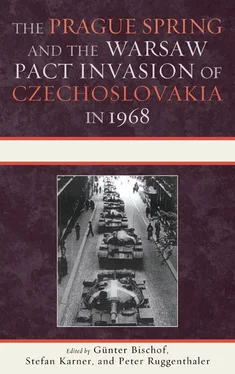It should also be noted that part of the modernist assumptions, which gave so much credit to neocapitalism, prompted PCI leaders to further expand their own notions of “socialism with a human face.” The NATO umbrella to which Berlinguer referred was not only a protection in terms of security, but also in economic and social terms. According to Communist intellectual Franco Rodano, Italy could spearhead the transformation of Europe through the use and diversion of a consumerist economy, shifting its dimension gradually from private to “public” or “social consumption.” 80In other words, a more affluent Europe, made possible by its permanence in NATO, would ultimately emancipate Europe socially and geopolitically from U.S. control.
The 1960s movements in both Europe and the United States that “purported to despise and abhor ‘consumer culture’ were from the outset an object of cultural consumption, reflecting a widespread disjunction between rhetoric and practice.” As Tony Judt has best noted, the effects of both revolts in the East and the West were limited: “in the East the message of the Sixties was that you could no longer work within the ‘system’; in the West there appeared no better choice.” So much of the fervor and antiestablishment of the 1960s was the “swansong” of Europe’s “revolutionary tradition.” 81It was the second major step toward ending ideological politics in Europe. The first one had an economic dimension, the “politics of productivity,” as pointed out by Charles Maier and others in reference to the effects of the Marshall Plan. This second one ultimately went deeper, favoring the private sphere over collective struggles, or as Maier again noticed, 1968 transformed the social, technological, and cultural bases of the “imperial rivalry” between the two superpowers, and ended the “controlled conflictuality” of bipolarism and the Cold War. 82
CONCLUSION: REFLECTIONS ON THE U.S. CONFRONTATION WITH WESTERN COMMUNISM
The main key to understanding the tension between establishment and antiestablishment pressures within the French and Italian Communist parties lies in their perceptions of and interactions with U.S. influence. The U.S. response was also significant. Throughout the Cold War, the United States only gradually evolved toward exhibiting the necessary flexibility in confronting left-wing anti-Americanism. 83After placing much confidence in economic determinism during the early phases of the Marshall Plan, the U.S. foreign policy establishment reached the conclusion that communism in the West did not thrive only in poverty. An Intelligence Report of December 1952 described the situation of the previous years in France, where the living standards were relatively high while the social gaps did not appear to diminish, but to widen. The study pointed out that “only a rough correlation exists between poverty and adherence to the French Communist Party. What is true, rather, is that the party rallies those who are discontented with their present living standards, which may not necessarily be the lowest in the country, that they are convinced that only thoroughgoing changes in the social and economic order could possibly improve things for them.” 84
The resilience of both the PCI and PCF, despite their strong identification with the Soviet Union and in face of the two nations’ economic growth, induced the Truman and Eisenhower administrations to refine their own instruments of psychological warfare and also to wage a “cultural cold war” to defuse many of the Western Europeans’ assumptions about the United States’ cultural shallowness. Psywar consisted above all of repressive actions geared to reduce the institutional power and mass appeal of the two Communist parties. Those actions yielded only short-term results. The U.S. cultural cold war institutional framework also had relative success in the 1950s and 1960s, but in 1967 was discredited by revelations of CIA backing. 85
All the refinement of these propaganda battles are rather significant for the gradual, long-term effects they had on U.S. leadership itself. In 1949, George F. Kennan was in a relative minority as he observed that in the West, the Communist appeal was “emotional” more than economic. This induced the architect of containment to stigmatize some “fundamental flaws” within the “complicated civilization” of the West. He regretted the disappearance of the sense of organic community in modern U.S. society. Instead, he noted, the individual found solace in a culture of media, consumerism, and hedonism. The result of all this was “a gradual paralysis of the sense of responsibility and initiative in people….” “Not being the masters of our own soul,” Kennan concluded, “are we justified in regarding ourselves as fit for the leadership of others? All our ideas of ‘world leadership,’ ‘the American century,’ ‘aggressive democracy’, etc. stand or fall with the answer to that question.” Almost ten years later, President Dwight D. Eisenhower also mused over the insecurities of the Western man and the conditions of atomized passivity and confided to his speechwriter Emmet J. Hughes that he felt “the need to assert American purposes, before all the world, in terms more proud, and in measures less mean, than sheer material might.” 86
At the onset of the youth rebellion and anti-Vietnam protest in both Europe and the United States, most U.S. officials feared that the most insidious forms of left-wing anti-Americanism on both sides of the Atlantic could be mutually nurtured. 87This did happen, but in the end, as we have seen, to the detriment of Communist orthodoxy and even power in France and Italy. It is no accident that Senator J. William Fulbright, who best grasped the importance of U.S. soft power, during the Vietnam war argued that the “selfcritical, generous America,” should eventually prevail over the “egotistical… self-righteous” one. As late as 1977, at the peak of the Eurocommunist experiment, Secretary of State Henry Kissinger reflected that “the spread of Marxism” in Western Europe “[could] be one of the profound problems of the modern period, namely the alienation of the population from the modern industrial state, that in the modern industrial state no matter how it is governed the people feel that they have no influence over the real decisions, and if you couple that with certain left wing traditions in Italy and France you can see why it spreads.” 88Analyses such as these deeply informed the U.S. response to pluralism in the West and to Eurocommunism: they had the peculiar quality of synthesizing realism, a cultural understanding of certain exceptions in Western European politics, and an understanding of the limits of traditional Marxism in those contexts. 89
Washington’s response to the Communist threat in France and Italy, and even the effects of Americanization altogether, were strongest when the United States married its own “psychological warfare” to a subtle use of diplomatic actions that only indirectly helped modify the political balance within each of the two allied countries. Making diplomatic concessions to the French and Italian governments throughout the Cold War helped raise their profile against the Communist opposition. Moderately accommodating President de Gaulle on certain international issues helped muffle the anti-Americans on the left in France. Eisenhower’s Atoms for Peace campaign won over important sectors of public opinion in France and Italy and in only a few other countries. The diplomacy of détente, both in the late 1950s and in the Nixon-Kissinger era helped not only harness the voices of pacifism and protest in the Western world, but also check Communist pressures within NATO. U.S. diplomacy in the Middle East from the mid-1950s, allowing indirectly a U.S. dialogue with the center-left in Italy, helped isolate that country’s extreme Left.
Читать дальше












